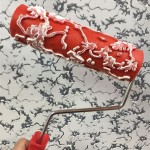Subway Tile Flooring: A Comprehensive Guide to Floor & Decor Selection
Subway tile, traditionally known for its rectangular shape and glossy finish, has transcended its initial role as a wall covering and emerged as a versatile flooring option. While commonly associated with kitchen backsplashes and bathroom walls, advancements in tile manufacturing and design have made subway tile a viable and aesthetically pleasing choice for flooring applications. Its durability, ease of maintenance, and timeless appeal contribute to its growing popularity in residential and commercial spaces. This article provides a detailed overview of subway tile flooring, focusing on selection criteria available at Floor & Decor, installation considerations, and maintenance practices.
Understanding Subway Tile Specifications for Flooring
The suitability of subway tile for flooring hinges on several key specifications. The material composition, thickness, slip resistance, and aesthetic features all contribute to the tile's performance and longevity under foot traffic. A careful evaluation of these factors is crucial when selecting subway tile for any flooring project.
Material Composition: Subway tiles are typically made from ceramic or porcelain. Ceramic tiles are a cost-effective option suitable for low to moderate traffic areas. They are relatively soft and porous, which can make them susceptible to staining and scratching if not properly sealed. Porcelain tiles, on the other hand, are denser and less porous than ceramic tiles. They are fired at higher temperatures, resulting in a more durable and water-resistant material ideal for high-traffic areas and areas prone to moisture, such as bathrooms and kitchens. Floor & Decor typically distinguishes between ceramic and porcelain subway tiles, providing detailed specifications for each material type.
Thickness: The thickness of the subway tile is a critical factor in determining its load-bearing capacity and resistance to cracking. For flooring applications, thicker tiles are generally preferred. A minimum thickness of 8mm (approximately 5/16 inch) is recommended for residential use, while commercial applications may require tiles with a thickness of 10mm (approximately 3/8 inch) or greater. Floor & Decor provides detailed product specifications, including tile thickness, ensuring that customers can select tiles appropriate for their intended use.
Slip Resistance: Slip resistance is paramount for safety, particularly in areas prone to moisture or spills. The slip resistance of a tile is measured using a slip resistance rating, often expressed as a Dynamic Coefficient of Friction (DCOF). A higher DCOF indicates greater slip resistance. For flooring applications, a DCOF of 0.42 or higher is generally recommended for level surfaces in dry conditions. In wet areas, a higher DCOF is necessary. Floor & Decor typically provides DCOF ratings for their subway tile products, allowing customers to make informed decisions regarding safety.
Aesthetic Features: Subway tile offers a wide range of aesthetic options, including size, color, finish, and texture. The traditional size of a subway tile is 3x6 inches, but larger and smaller sizes are also available. Color options range from classic white to vibrant hues, allowing for customization to suit various design styles. Finishes include glossy, matte, and textured surfaces. Glossy finishes are easy to clean but can be slippery when wet. Matte finishes provide better traction and a more muted appearance. Textured finishes add visual interest and can enhance slip resistance. Floor & Decor offers a diverse selection of subway tile options, catering to a wide range of aesthetic preferences.
When selecting subway tile for flooring at Floor & Decor, it is crucial to carefully review the product specifications, paying close attention to the material composition, thickness, slip resistance rating, and aesthetic features. Consulting with a Floor & Decor representative can also provide valuable guidance in choosing the most appropriate tile for a specific application.
Installation Techniques for Subway Tile Flooring
Proper installation is essential for the longevity and performance of subway tile flooring. The installation process involves several key steps, including subfloor preparation, layout planning, tile cutting, setting the tiles, grouting, and sealing. Each step requires careful attention to detail to ensure a professional and durable result.
Subfloor Preparation: The subfloor must be clean, level, and structurally sound before installing subway tile. Any imperfections, such as cracks or unevenness, must be addressed to prevent tile cracking or instability. Concrete subfloors should be cleaned and leveled using a self-leveling compound if necessary. Wood subfloors should be inspected for damage and reinforced as needed. A backer board, such as cement board, should be installed over wood subfloors to provide a stable and water-resistant surface for the tile. Floor & Decor offers a variety of subfloor preparation products, including self-leveling compounds and backer boards.
Layout Planning: Careful layout planning is crucial for achieving a visually appealing and symmetrical tile installation. Begin by determining the focal point of the room and laying out the tiles from that point outward. Consider the size and shape of the room, as well as any architectural features that may affect the layout. Use spacers to maintain consistent grout lines. Avoid small tile cuts at the edges of the room, if possible, as these can detract from the overall aesthetic. Floor & Decor representatives can provide guidance on layout planning and assist in calculating the amount of tile needed for the project.
Tile Cutting: Subway tiles can be cut using a wet saw or a manual tile cutter. A wet saw is preferred for making precise cuts and for cutting porcelain tiles, which are harder than ceramic tiles. Always wear safety glasses and gloves when cutting tiles. Mark the cut line on the tile using a pencil or marker. Use a slow and steady motion when cutting to prevent chipping or cracking. Floor & Decor offers a selection of tile cutting tools for purchase or rental.
Setting the Tiles: Apply a thin-set mortar to the subfloor using a notched trowel. The size of the notch will depend on the size of the tile. Follow the manufacturer's instructions for mixing and applying the mortar. Press the tiles firmly into the mortar, using spacers to maintain consistent grout lines. Work in small sections to prevent the mortar from drying out. Use a level to ensure that the tiles are aligned properly. Floor & Decor offers a variety of thin-set mortars suitable for different tile types and subfloor conditions.
Grouting: Allow the mortar to cure for the recommended time before grouting. Remove the spacers and clean the grout lines. Apply grout to the tile surface using a grout float. Work the grout into the grout lines using a diagonal motion. Remove excess grout from the tile surface using a damp sponge. Rinse the sponge frequently to avoid smearing the grout. Allow the grout to dry for the recommended time before polishing the tile surface with a clean cloth. Floor & Decor offers a wide selection of grout colors to complement different tile styles.
Sealing: Sealing the grout lines is essential for preventing staining and water damage. Apply a grout sealer to the grout lines using a brush or applicator. Follow the manufacturer's instructions for application and drying time. Sealing may need to be repeated periodically, depending on the type of grout and the amount of traffic. Floor & Decor offers a variety of grout sealers for different types of grout.
Proper installation is crucial for ensuring the longevity and performance of subway tile flooring. Careful attention to subfloor preparation, layout planning, tile cutting, setting the tiles, grouting, and sealing will result in a professional and durable installation. Consulting with a professional tile installer is recommended for complex projects or for those unfamiliar with tile installation techniques.
Maintenance and Care of Subway Tile Flooring
Proper maintenance is essential for preserving the beauty and longevity of subway tile flooring. Regular cleaning and preventative measures can help to prevent staining, scratching, and other damage. The maintenance routine will vary depending on the type of tile, the type of grout used, and the amount of traffic the floor receives.
Regular Cleaning: Sweep or vacuum the floor regularly to remove dirt, dust, and debris. Mop the floor with a mild detergent and warm water. Avoid using abrasive cleaners, as these can scratch the tile surface. For stubborn stains, use a specialized tile cleaner or a solution of baking soda and water. Rinse the floor thoroughly with clean water and dry it with a clean cloth. Floor & Decor offers a variety of tile cleaning products formulated specifically for ceramic and porcelain tiles.
Grout Cleaning: Grout is porous and can easily become stained or discolored. Clean grout lines regularly using a grout brush and a grout cleaner. A solution of baking soda and water can also be used to clean grout lines. For heavily stained grout, use a bleach-based grout cleaner, but be sure to test it in an inconspicuous area first to ensure that it does not damage the tile or grout. Rinse the grout lines thoroughly with clean water after cleaning. Floor & Decor offers a variety of grout cleaning products and tools.
Preventative Measures: Place mats or rugs at entrances to prevent dirt and debris from being tracked onto the floor. Use furniture pads under furniture legs to prevent scratching. Clean up spills immediately to prevent staining. Avoid using harsh chemicals or abrasive cleaners on the tile surface. Reseal the grout lines periodically to prevent staining and water damage. Regular maintenance and preventative measures will help to keep subway tile flooring looking its best for years to come.
In summary, selecting subway tile flooring from Floor & Decor requires careful consideration of material composition, thickness, and slip resistance. Proper installation techniques, including subfloor preparation and precise tile setting, are crucial for durability. Regular maintenance involving appropriate cleaning agents and preventative measures ensures the longevity and aesthetic appeal of subway tile flooring.

Bright White Ice Subway Ceramic Wall Tile Floor Decor
12 X 24 Tile Flooring Floor Decor
Get Inspired With 15 Shower Design Ideas Floor Decor Blog

23 Ways To Decorate With Subway Tile Architectural Digest

Daltile Re Bright White 3 In X 6 Glossy Ceramic Subway Wall Tile 12 5 Sq Ft Case Re1536modhd1p4 The Home
A Backsplash For Any Budget

Inspiration Catalogs Floor Decor Summer Catalog 2024 Festival Bright White Ice Subway Ceramic Wall Tile 3 X 6

84 Chic Subway Tiles Ideas For Bathrooms Digsdigs
Get Inspired With 15 Shower Design Ideas Floor Decor Blog
:max_bytes(150000):strip_icc()/mindy-gayer-napa-farmhouse-9-1-1024x646-9815aaf0c931482a8d8b5106020cb983-619d827bace9421eae0f90577bdbfd5e.jpg?strip=all)
37 Subway Tile Bathroom Ideas That Work Every Time








